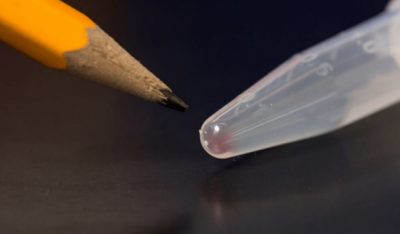If you think that DNA is just a biological term and can store a person’s genetical makeup; then think again! DNA storage is a new term in technology; specifically related to Big Data. It is nothing but using synthetic DNA strands to store data that is huge in size (something like Zettabyte). DNA data storage is a relatively new term in Big Data storage.

Microsoft together with the researchers from the University of Washington have been successful in setting a new record in DNA data storage. They were successful in storing a record 200 megabytes of data on the molecular strands of a DNA.
The success of DNA storage
The success lies not only in storing 200 megabytes of data on DNA; but also to decode it. Besides, it is also important to know how much space was utilized in DNA storage for storing 200 megabytes of data. Once the data was stored on a DNA and encoded, the data occupied a spot in a test tube. According to Douglas Carmean, the partner architect at Microsoft overseeing the project this size is much smaller than the tip of a pencil.
This new record in DNA storage has opened a lot of opportunities for Big Data storage methods. The day is not far when the big data is compressed into the size of a few sugar cubes. It is also possible to store the publicly accessible data on the Internet into a shoebox. All this is feasible because of a number of possibilities that come with DNA storage.
Why DNA Storage
There are a number of advantages related to DNA storage. The synthetic DNA serves as a compact and durable medium to store Big Data. It is capable of lasting for a very long time if kept in good conditions. This is proven fact as the DNA from the mammoths that got extinct thousands of years ago were still found in good condition in many areas of the world. This is also possible with the synthetic DNA strands used for DNA storage.
Karin Strauss, the principal Microsoft researcher on the project says,
“As long as there is DNA-based life on the planet, we’ll be interested in reading it. So it’s eternally relevant.”
Microsoft and the fellow researchers are certainly moving towards the future with the innovations like DNA storage.
Read this interesting post in detail on Microsoft Blogs.
Leave a Reply